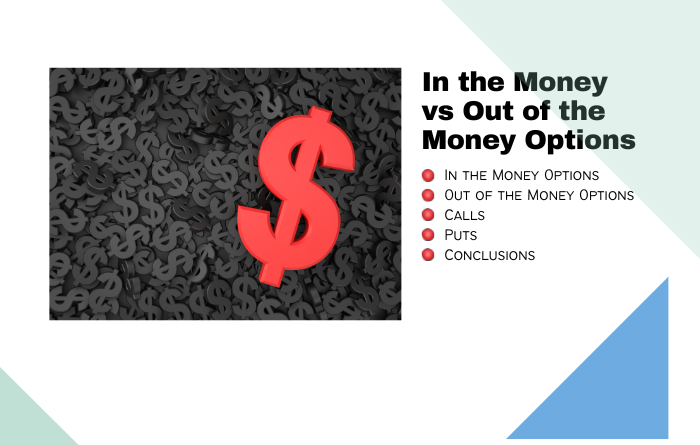In the Money vs Out of the Money Options
In options trading, the terms “in the money” (ITM) and “out of the money” (OTM) refer to the relationship between the strike price of an option and the market value of the underlying stock, also known as its moneyness. Understanding the difference between these two terms is crucial for traders who want to make informed decisions when buying and selling options.
In the Money Options
An ITM option is one where the strike price has already been surpassed by the current stock price. For example, a call option with a strike price of $132.50 would be considered ITM if the underlying stock is valued at $135 per share.
ITM options have intrinsic value and are priced higher than OTM options in the same chain. As a result, the price moves for ITM options tend to be relatively smaller, though large price moves can still occur.
One common use for ITM options is for hedging or partially hedging a trader’s position. They may also be preferred by traders who want to buy an option that has some intrinsic value, rather than just time value.
Out of the Money Options
OTM options, on the other hand, have a strike price that the underlying security has not yet reached, meaning the option has no intrinsic value. OTM options are nearly always less expensive than ITM options, making them more desirable to traders with smaller amounts of capital.
OTM options are commonly traded for strategies such as covered calls or protective puts.
OTM is a good choice for traders who expect a big move in the stock price, since the lower up-front cost of the option provides a higher potential for return.
However, it’s important to note that OTM options often experience larger percent gains/losses than ITM options, so traders should be prepared for increased volatility.
Calls
A call option gives the option buyer the right to buy shares at the strike price if it is beneficial to do so. An ITM call option is one where the strike price is lower than the current stock price. The intrinsic value of an ITM call option is equal to the difference between the stock price and the strike price, but the option may cost more than the intrinsic value due to the inclusion of time value.
The further the option is from expiration, the more time value it will have.
Puts
Put options, on the other hand, are purchased by traders who believe the stock price will go down. An ITM put option is one where the strike price is above the current stock price. The price of a put option tends to increase the farther away from expiration it is, due to the inclusion of time value.
Conclusion
Whether to choose ITM or OTM options depends on the trader’s outlook for the underlying security, financial situation, and desired outcome.
Both ITM and OTM options have their pros and cons, and the choice ultimately depends on the specific trading strategy being employed. By understanding the difference between ITM and OTM options, traders can make informed decisions and maximize their chances of success.
